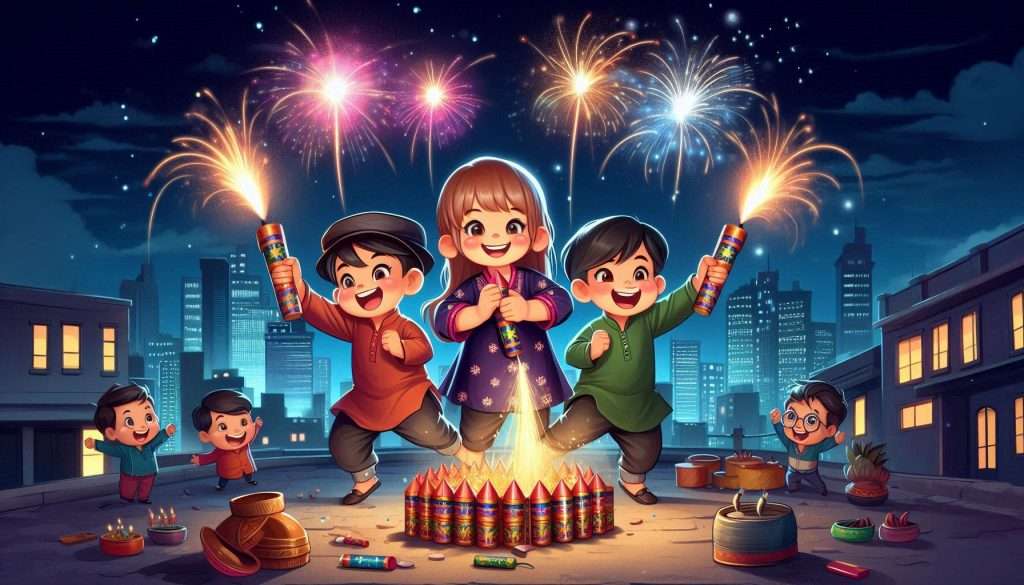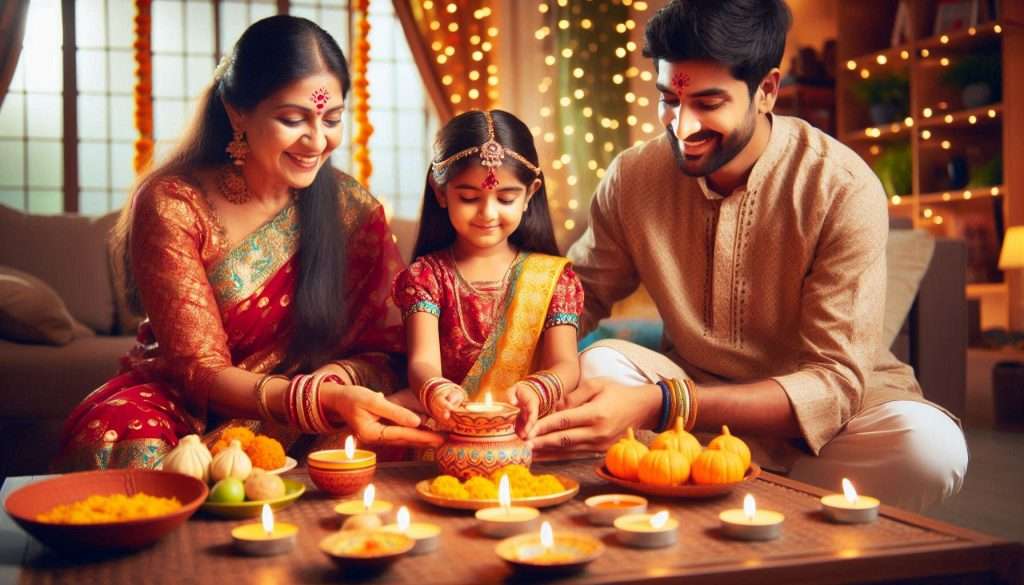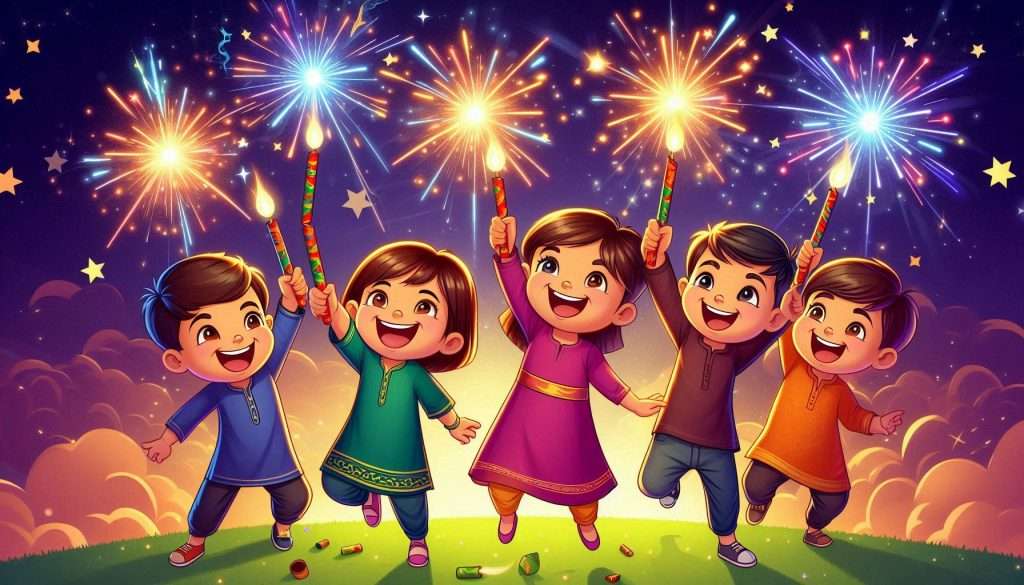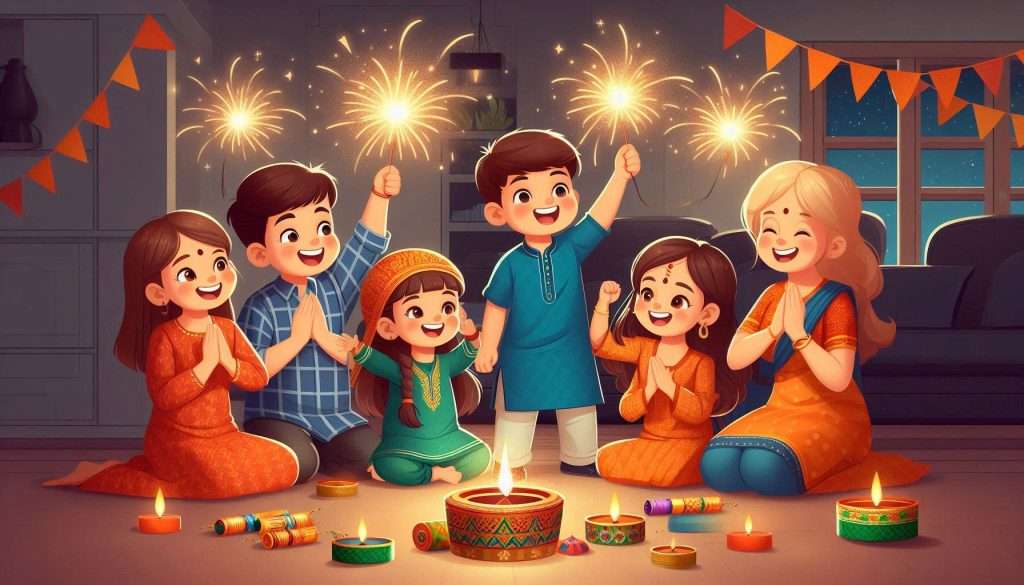Diwali, also known as the Festival of Lights, is one of the most vibrant and celebrated festivals in India. It’s a time of joy, togetherness, and traditions that transcend generations. Growing up, Diwali held a special place in my heart, and every year, I look forward to the festivities, each time with a renewed sense of excitement. Here’s a look at why we celebrate Diwali, how it’s observed, and a glimpse into my own experience celebrating this beautiful festival.
Why Diwali is Celebrated
Diwali, or Deepavali, has different cultural meanings across various regions and religions, but the central theme revolves around the victory of good over evil, light over darkness, and knowledge over ignorance. Diwali’s origins can be traced to multiple legends and stories that highlight this theme:
- Return of Lord Rama: In Hindu tradition, Diwali commemorates Lord Rama’s return to Ayodhya after a 14-year exile and his victory over the demon king Ravana. The citizens of Ayodhya lit rows of lamps to welcome him, hence the name Deepavali, which translates to “row of lights.”
- Goddess Lakshmi: For many, Diwali is also associated with the worship of Goddess Lakshmi, the deity of wealth and prosperity. It is believed that she visits homes during Diwali, blessing them with fortune and abundance.
- Mahavira’s Nirvana: In Jainism, Diwali marks the day Lord Mahavira, the last Tirthankara, attained Nirvana or spiritual enlightenment.
- Harvest Festival: For some communities, Diwali also signifies the end of the harvest season, a time to celebrate the year’s hard work and reap the rewards.

How Diwali is Celebrated
Diwali celebrations usually span over five days, each day carrying its own significance and traditions. Here’s a breakdown of the celebrations:
- Dhanteras: The first day marks Dhanteras, a day to purchase new items, especially gold or utensils, as a symbol of good fortune. Many also clean and decorate their homes in preparation for the main festivities.
- Naraka Chaturdashi (Choti Diwali): The second day is known as Naraka Chaturdashi or Choti Diwali, which symbolizes the elimination of evil and impurities. People take special oil baths, symbolizing purification and renewal.
- Diwali (Lakshmi Puja): The third day is the main day of Diwali. Families decorate their homes with diyas (oil lamps) and rangoli (colorful designs on the floor). In the evening, a special puja is performed to honor Goddess Lakshmi and Lord Ganesha. Following the puja, families light fireworks and enjoy festive meals.
- Govardhan Puja: The fourth day is celebrated in different ways across regions but often includes worship and offerings to Lord Krishna and a celebration of family bonds.
- Bhai Dooj: The final day, Bhai Dooj, celebrates the bond between brothers and sisters, where sisters pray for the well-being of their brothers, and siblings exchange gifts.
Diwali is marked by family gatherings, lavish feasts, and exchanging sweets and gifts. Streets and homes are adorned with lights, and the whole community comes alive with festivities.

My Experience Celebrating Diwali
For me, Diwali is a blend of nostalgia, joy, and community. As a child, I remember the thrill of picking out new clothes for the festival and spending the entire day with family. Waking up early for the traditional oil bath was never my favorite part, but it felt special knowing everyone else was doing the same as we prepared for the day’s celebrations.
One of my favorite parts of Diwali has always been decorating the house with rangoli and diyas. I enjoy the creative process of designing colorful patterns at the entrance, and there’s something magical about seeing flickering diyas lighting up the night. The act of placing each diya around the house feels like more than a decoration—it’s a tribute to the festival’s spirit of dispelling darkness with light.
After the Lakshmi Puja, it’s time to burst firecrackers, which was always my highlight growing up. While I’ve become more mindful of the environmental impact now, I still enjoy sparklers and watching the fireworks light up the sky. Diwali dinners are another cherished memory—feasting on homemade sweets like laddoos and kaju katli, and relishing every moment with loved ones.
Each Diwali brings a renewed sense of gratitude and togetherness, and it’s a reminder to embrace light, joy, and compassion in our lives. This festival has a way of making everything feel brighter and more hopeful, and I feel lucky to be part of such a beautiful tradition.

Conclusion
Diwali’s not just a festival but a reminder of the values we hold close: love, unity, and resilience. No matter where we are in the world, Diwali brings us back to our roots, giving us a chance to reconnect with family, celebrate together, and spread joy and kindness. As we light up our homes and hearts this Diwali, let’s remember the true essence of the festival and carry its spirit with us every day.
If the information you are looking for is not available here, please contact us. Additionally, follow us on our social media platforms for updates and more information:

